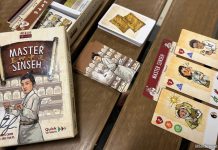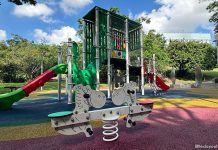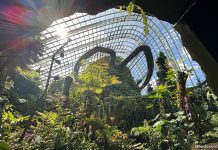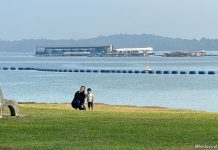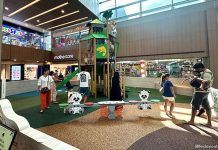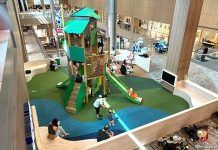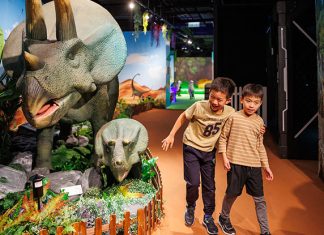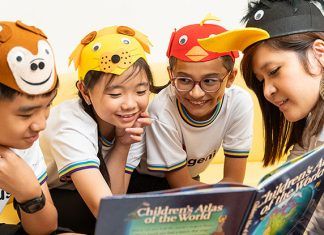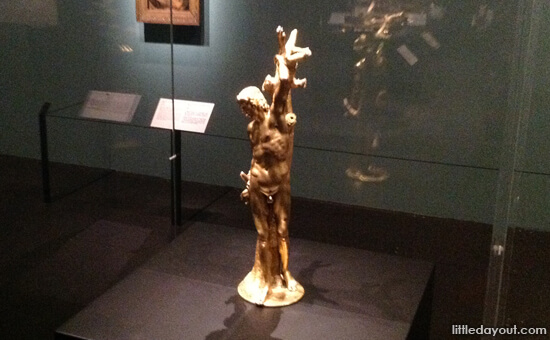
Is it possible in this age of computer games, MTV-style cartoons and quick thrills for kids to appreciate an art exhibition? On a broader level, can a museum hold the attention of today’s children who have been raised on fast images and instant gratification?
This question was niggling at the back of our minds as we brought our 5- and 8-year olds to visit the Princely Treasures from the House of Liechtenstein exhibition, currently on display at the National Museum of Singapore.
How would a museum, and what’s more, a serious art exhibition, stack up against themed parks and water rides that the children crave for? We knew that it would be a challenge at best, especially since kids nowadays are so used to being entertained by all sorts of amusements and distractions.
Nonetheless, with priceless works of art from Europe ending up at our doorstep, we could not resist the opportunity to expose the kids to some culture. After all, we reasoned, we would otherwise have to fly all the way to Europe to see similar objects of art.
It also helped that children below six and local school-going children with a valid student pass get free admission into the exhibition.
Overview of the Exhibition
Princely Treasures from the House of Liechtenstein presents 91 pieces of art from The Princely Collections, Liechtenstein museum. This is complemented with 16 portraits from Singapore’s own National Collection. It can be broadly divided (purely from lay person’s point of view and with apologies for the gross over-simplification) into the following sections:-
1. Meet the Liechtenstein family – An introduction to the Princely family of Liechtenstein. See portraits of family members and their palaces, as well as get a glimpse of their palace interiors.
2. The Renaissance – A small room presents art from the Renaissance, the period in the 1400s straight after the Middle Ages, where there was a renewed focus on human needs, interests and abilities. Here, you will be able to find Raphael’s Portrait of a Man.
3. Baroque – A large component of the exhibition floor space. The Baroque movement is analogous to the “rock star” of art history. It is characterised by strong colours, as well as emotional and dramatic statements.
4. Biedermeier Art – Bringing the rock-and-roll lifestyle of Baroque Art back to earth, Biedermeier Art presents sober representations of everyday objects and private life.
5. Singapore Portraits – A series of portraits from monarchs to our first local Head of State.
Walking Through the Art Collection with Kids
As we approached the exhibition hall, the first order of business was to tell the kids not to touch any of the exhibits or paintings.
At the entry hall, with its large images of the palace with gold gilded doors and chandeliers, we easily explained to them that this was what a European palace looked like. Moving to the next room, we showed the portraits of the Liechtenstein Princes to the kids. They ended up asking why the Princes had such long hair, sparking off a discussion about wigs and the fashion of their day.
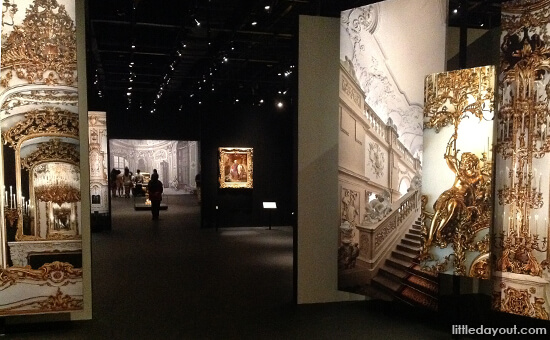
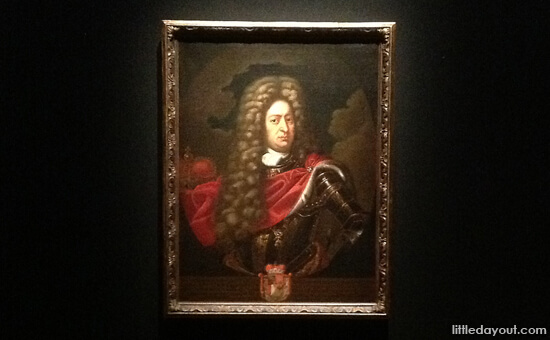
Tapestries on display further down the hall allowed us to share with them about how people in castles and palaces lived. (The tapestries were used as decorations and to keep rooms warm).
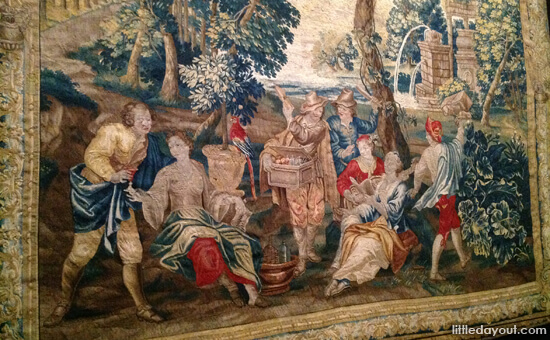
The Renaissance room, which came next, was harder for the kids to appreciate. On hindsight, perhaps we could have asked them to spot the differences between the medieval pictures on the tapestries and those in the Renaissance room. This would have highlighted the differences in art that the Renaissance is known for.
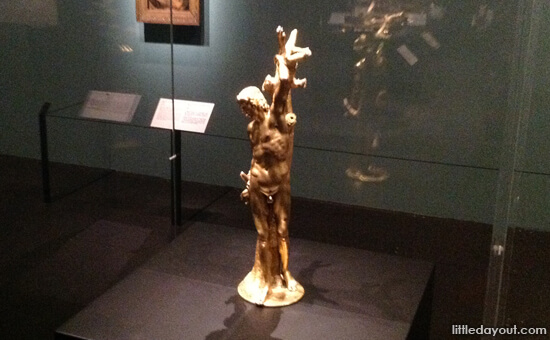
Moving into rooms with Baroque Art, one interesting little “game” we played was at the Peter Paul Rubens room.
Peter Paul Rubens was a popular Baroque artist. As part of his work, he would hire a “face model” whose likeness was initially captured as a small sketch. The model’s face would then be re-used and painted into Rubens’ other works of art.
Within the Rubens room, one of the walls has three paintings in a row. The leftmost picture is a sketch of a “face model”. See if you can spot another painting in the room where the face model’s face reappears. (Hint: It is on the same wall.)
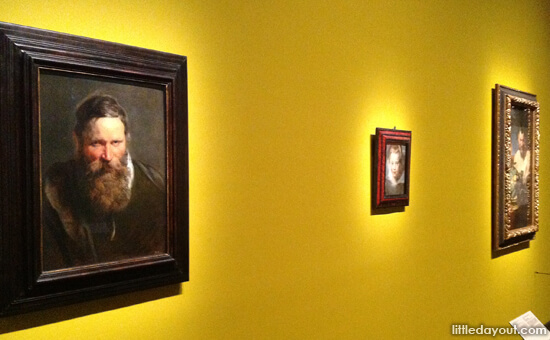
Next stop were the neo-classical paintings of Venice and Rome hanging near the Biedermeier section. Here, we explained to the kids that in olden days, just like today, people used to go on holidays to other cities and countries. However, they did not have digital cameras with which to take photographs of their travels. Instead, they would buy paintings, such as these, to take home to remember their vacation time.
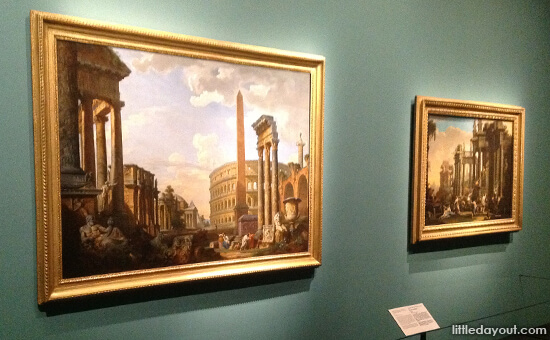 Finally, we came to the portraits from Singapore’s National Collection. Here, the children looked at paintings of royal regalia before coming to the portrait of Yusof bin Ishak, Singapore’s first President. They did not know who he was at first until we pulled out a two-dollar note and showed them that he was an important person whose face also appeared on the bill.
Finally, we came to the portraits from Singapore’s National Collection. Here, the children looked at paintings of royal regalia before coming to the portrait of Yusof bin Ishak, Singapore’s first President. They did not know who he was at first until we pulled out a two-dollar note and showed them that he was an important person whose face also appeared on the bill.
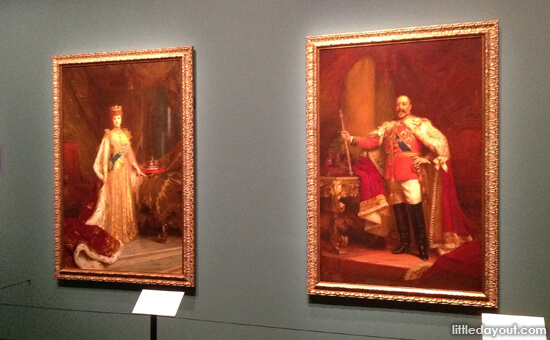
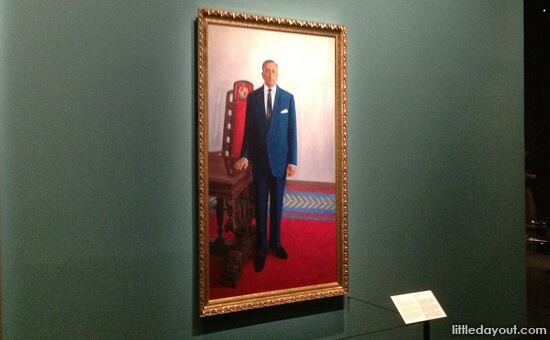
Reflecting on the Experience
It was hard work trying to help the kids relate to the objects they saw and the paintings on the walls. We could have easily walked past most of them had we left it to the children to lead the way.
Nonetheless, we thought the visit to the exhibition was a good opportunity to expose them to other cultures, especially one that is not immediately accessible through the goggle-box.
By the end of the visit, when asked what they had gleaned from the visit to the exhibition, thankfully, they were able to relate some of the information back.
Even though, they are not likely to turn into art connoisseurs anytime soon and would just as quickly turn back to the TV or iPad once home, at least for a short while, they were able to look, through the windows of art, into another world.
And as parents, that is something we felt we should at least afford them, even if just for the short span of a visit to the museum.









